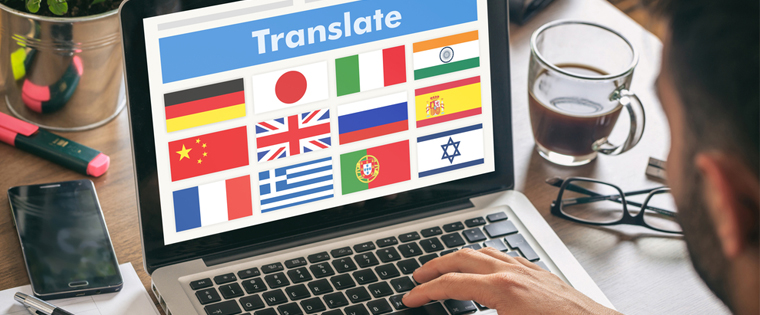5 Things to Remember when Translating Your Training Material

Organizations world over invest heaps of resources and time to make their training material multi-lingual, because employees today expect to be trained in their own native languages, as it makes understanding of the training material easier. Bringing your e-learning to a global audience bears multiple benefits, provided you are able to circumvent the slippery pitfalls companies usually succumb to.
Are you an organization that’s looking to translate their training material? In this blog, I will offer you five simple tips which will ensure that you don’t go off the rails en route to e-learning translation. Let’s begin.
1. Ensure the quality of the source content that needs to be translated
Training managers and other stakeholders often focus on scope, language, technology, goals and other topics during the translation kick-off. One critical thing that gets left out of the discussion however, is quality of the source content. Your source text acts as a base for your translated material in other languages. Ask yourself how well the source content is written. Because as the number of your target languages increases, the impact of the source content increases too.
Once you have analyzed the source content, the next step is to create a translation template. Creating a translation template is the most important step in the translation process – it includes directions for the onscreen content, GUI names and other relevant elements. The translation quality of your training materials will depend on the precision and clarity with which a translation template is prepared.
Here’s an informative blog on some tips to remember when preparing your source text for translations.
2. Check the availability of already translated courses
Check whether the existing translated courses, if any, have information you can reuse for your current translation. For example, courses that have been translated earlier can provide you information about the abbreviations of jargon. If existing courses are for the same translator, you might have instructions, common GUI elements, assessment screens of the same curriculum, that can be reused. This saves a lot of time and resources when you start your translation process.
3. Have a well-defined translation process
Avoid cost and time overruns of your e-learning course by creating a well-defined translation process. Here, you use the instructions in the storyboard to create the actual translation of the course. It is wise or even recommended to take the help of native professionals for translation, but you must monitor the quality at every stage of the translation process.
The translation received from the third-part translator will need to be reviewed, by either an in-house subject matter expert (SME), or a professional linguist. Once the sample is approved by the SME, the translation work of the entire course can be started.
4. Provide translators with the right reference material
As discussed earlier, your source content is the base for your translated material. You must provide translators with the right source/reference material to expect an optimum translation. This reference material must contain explanation of terms, abbreviations, and other relevant inputs required to render the course effectively into the intended language(s). Also, let your translators know if you wish to localize any content or image before you start the final course development, as doing it later would have cost repercussions.
5. Give them enough time to produce quality output
You have to understand that translation is not easy; a lot goes into an e-learning training material translation. The text, audio, visuals and other multimedia elements, each of these needs to be carefully handled. Not only that, there are more to a translation process than what meets the eye, such as:
- The length of the text can expand or contract based on the language
- Audio synching has to be done for narrations in translated voiceovers
- If the orientation of the script is different, such as left to right or top to bottom, it may have to go through a native/professional linguist
These are just some of the things involved in translating the training material. At the end of the day, what you need to do in order to succeed is have good communication with the translators and some good project management.
Training material translations are a slippery slope. Like all processes, if done rightly, it can have a powerful outcome. When your employees get trained in their own native language, it improves their comprehension and they respond well to their training. Follow these five guidelines and you can rest assured your globally-dispersed workforce will respond and perform well.





